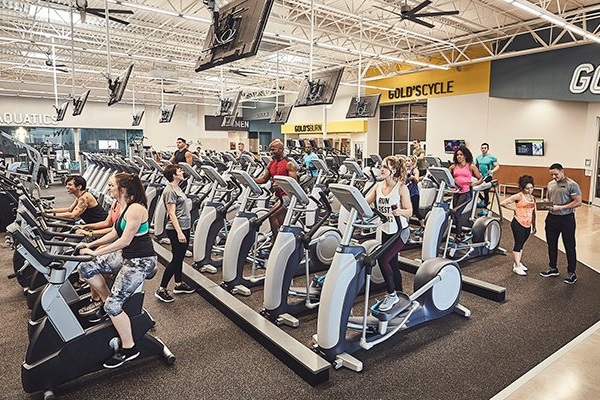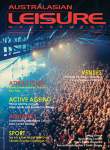University of South Australia research show that cardio-fitness reduces death and disease

Groundbreaking new research from the University of South Australia finds that an increased cardio fitness levels reduce the risk of death from any cause by 11 to 17%.
Published in British Journal of Sports Medicine, the study found that for every 1-MET increase in cardiorespiratory fitness - the amount of energy used for quiet sitting - a person can reduce their risk of death by 11-17%, and specifically, their risk of heart disease by 18%.
Comprising 26 systematic reviews with meta-analysis representing more than 20.9 million observations from 199 unique cohort studies, it is the first study to collate all the scientific evidence that looked at the prospective link between cardiorespiratory fitness and health outcomes among adults.
Senior author, UniSA’s Professor Grant Tomkinson, says that cardiorespiratory fitness is probably the most important type of fitness for good health, commenting “cardiorespiratory fitness (CRF) is your ability to perform physical activity for a long period of time like running, cycling, and swimming.
“In this study we found prolonged cardiorespiratory fitness is strongly and consistently associated with all types of premature death and incident disease - spanning heart failure, depression, diabetes, dementia and even cancer.
“We summarised the evidence linking CRF to numerous health outcomes and found that those with low levels of CRF are far more likely to die early or develop chronic conditions like heart disease later in life.
“Specifically, we found that every 1-MET increase in CRF, which is the amount of energy used when sitting quietly, reduced the risk of early death from any cause and heart failure by 11-17% and 18%, respectively.
“For most people, a 1-MET increase in CRF can be achieved through a regular aerobic exercise program.
“The message is quite simple: if you do a lot of ‘huff and puff’ exercise, then your risk of dying early or developing diseases in the future is reduced. If you avoid exercise your health may suffer.”

Chronic health conditions are an ongoing cause of poor health, disability, and premature death. In Australia, an estimated 11.6 million people (47%) have a chronic and debilitating health conditions, which contributes to two thirds of the burden of disease.
Lead author from the Public Health Agency of Canada and Adjunct Professor at UniSA, Dr Justin Lang, says the study delivers a strong message for public health that cardiorespiratory fitness is an important marker of health status.
Dr Lang noted “clearly, cardiorespiratory fitness is as an important factor for good health. If you are already exercising, this is good news; but if you know you need to up your fitness and movement, then this is a timely reminder.
“People can make meaningful improvements through additional moderate physical activity, such as brisk walking, at least 150 minutes a week. And as they improve their fitness, their risk of death and disease will decline.
“But the onus for improvement should not just sit with the individual, it should also be routinely assessed in clinical and public health practice, so that we can support people to improve their health outcomes.
“Through regular assessment, clinicians and exercise professionals could better identify adults at greater risk of early death and initiate exercise programs aimed at increasing CRF through regular physical activity.”
This study was conducted in partnership with researchers from the Public Health Agency of Canada, the University of Granada, the University of Ottawa and University of Northern British Columbia.
Click here to access the research in the British Journal of Sports Medicine.
Images: Golds Gym International (top) and new research shows that regularly exercise such as running, cycling, or swimming can help a long and healthy life (below).
Related Articles
27th April 2024 - AUSactive seeks pre Federal Budget public support for active health memberships tax deductions
21st April 2024 - Fitness First launches ‘Yoga is for Everyone’ promotion in the UAE
17th April 2024 - Australians spent more than $3 billion on fitness clubs and gyms in 2023
16th April 2024 - AUSactive looks to engage Sunshine Coast residents in Million Moves challenge
10th April 2024 - Clean Health announces Australian Institute of Fitness acquisition
10th April 2024 - Keepme releases extensive Artificial Intelligence resources guide for fitness operators
4th April 2024 - Barrie Elvish takes AUSactive’s call for Federal budget to include tax deductibility for gym memberships to mainstream media
3rd April 2024 - PureGym study reveals Australia’s favourite exercise workout
6th March 2024 - Life Fitness debuts new cardio equipment range and digital solutions at IHRSA 2024
27th February 2024 - Study shows physical inactivity triples cancer risk
23rd January 2024 - Breast Cancer Trials’ fundraiser challenges dog lovers to walk 57km in February
22nd January 2024 - Technogym’s new Skillup range offers cardio and power for upper body training
10th November 2023 - New report shows global wellness economy reaches US$5.6 trillion and expected to hit US$8.5 trillion by 2027
3rd November 2023 - CERM PI invites input for 2023 Operational Benchmarking Survey for aquatic, recreation and sport centres
19th July 2023 - Walking, swimming and fitness centre training are the most popular activities Australians do regularly
4th July 2023 - Les Mills research reveals Gen Z to be huge untapped market for fitness industry
3rd July 2023 - Study finds gym exercise and resistance training guidance based on male research
26th April 2023 - University of South Australia research suggests ‘fitspiration’ influencers deliver dubious information
13th March 2023 - Viva Leisure study shows Australians rate mental health as top reason for attending the gym
7th March 2023 - IBISWorld sees declining fitness industry revenue and potential saturation of budget 24/7 gyms
1st November 2022 - AusPlay research results highlight a change in the way Australians are getting active
14th September 2022 - James Cook University research focusses on wellness effects of functional training
27th February 2024 - Torque Fitness releases new ski trainer to maximise cardio challenges
3rd September 2020 - Matrix Fitness introduces new cardio equipment portfolio
24th July 2017 - Sprint 8 Cardio program looks to boost retention, acquisition and revenue
30th May 2016 - Core Health and Fitness and ECOFIT combine to offer cardio fitness networking solution






